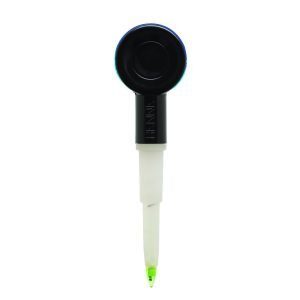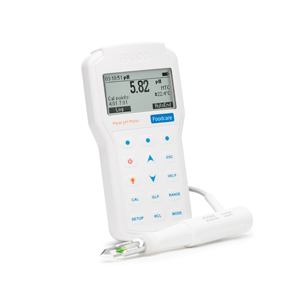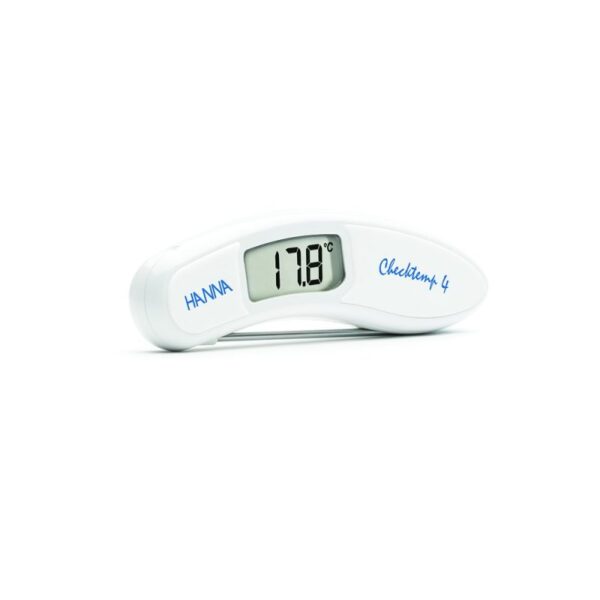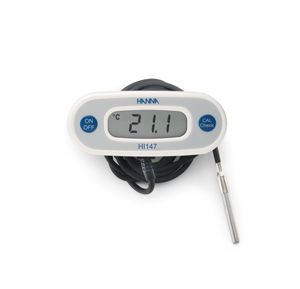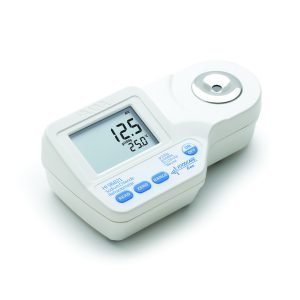
Fish has been an important source of protein, omega-3 fatty acid and other nutrients for humans throughout history. Fish should be consumed aproximatly 2 times a week. Many people in world lack in fish consumption, which can be problematic because fish is the main source of omega-3-fatty acid.
If we talk about a set of conditions necessary to meet the needs and expectations of consumers:
- health safety, nutritional value, convenience / ease of
use, sensory characteristics
To measure pH values of fish we recommed you HALO electrode FC2022.
HALO PVDF Body Foodcare pH Electrode with Bluetooth® – FC2022
The FC2022 HALO is a Bluetooth Smart (Bluetooth 4.0) Foodcare pH and temperature electrode composed of chemically resistant PVDF material.
This electrode has a unique open junction design in which there is a viscolene (hard gel) electrolyte layer that is free of silver chloride (AgCl) between the sample to be measured and the internal reference cell. The open junction design resists clogging and the probe’s conical tip makes it ideal for pH measurements in food products including dairy, dough, ground meats and fish and other semi-solid food samples.We also recommend HI98163 for more professional use.
Professional Portable Meat
pH Meter – HI98163
The HI98163 is a rugged, waterproof, Foodcare portable pH meter that measures pH and temperature using the specialized FC2323 meat pH electrode with a stainless steel piercing blade. This professional, waterproof meter complies with IP67 standards. The HI98163 is supplied with all necessary accessories to perform a pH/temperature measurement packaged into a durable thermoformed carrying case that holds the meters, probes and calibration buffers securely in place.
Affect of temperature on fish
Temperature can affect oxidation of proteins in fish. Higher temperature speeds up oxidation of fish proteins which leads to a change in functional properties and a change in nutritional value. Change in temperature and pH values can lead to denaturation of proteins. Protein denaturation changes the functional properties and color of fish meat. Higher temperature can lead to Maillard reactions, amino acid side chain reactions with reducing sugars and other carbonyl compounds. These reactions can cause change of texture, color, taste, and change of nutritional value of fish meat. Fish should be stored at a temperature as close as possible to 0 ー C (0-4 ー C). It is extremely important to maintain a cold chain until processing or consumption. The recommended shelf life is 5 to 20 days. Fast freezing is the best form of fish storage because there is less tissue damage and changes in mass. It is important to avoid temperature fluctuations during storage.
For best measure of temperature we recommend you HI151.
Checktempョ 4 Folding Thermometer – HI151
The HI151 Checktemp® 4 is a folding thermistor thermometer that can measure temperature up to 300 °C (572 °F). These thermometers offer many advanced features including CAL-Check for an internal verification of the electronics and a motion sensor which eliminates the need of closing and reopening the probe when the meter enters a power saving mode. The Checktemp 4 is available in six different colors which can be assigned to different products to avoid cross contamination in the restaurant, kitchen or production facility.
Or you could use HI148.
Waterproof Thermologger – HI148
From storage to shipping, it’s important to monitor the temperature of your products to ensure that they are being stored in optimal conditions. Quick to setup, simple to use, the HI148 Thermologger is ideal for monitoring temperature in applications such as food processing, transportation, museums, and horticulture.
For monitoring temperature of your fridge or cooling chambers you can use HI147.
The Remote Sensor Thermometer CheckFridge™ – HI147
The HI147 is a remote temperature sensor ideal for monitoring in food care environments. It contains magnets for easy placement on a metal surface and delivers high accuracy measurements over a wide temperature range.
Very often in fish products you should measure sodium chloride. For that purpose you should use refractometer for sodium chloride HI981035.
Digital Refractometer for Measuring Sodium Chloride in Food – HI96821
The HI96821 is a rugged, portable digital refractometer designed for sodium chloride (NaCl) measurement. The HI96821 displays NaCl concentration four different ways: g/100 g, g/100 mL, specific gravity, and °Baume. The instrument’s high accuracy and simple operation gives reliable results each and every time. All readings are automatically compensated for temperature variations and displayed with a 1.5 second response time. The sealed flint glass prism and stainless steel well are easy to clean. Just wipe with a soft cloth in preparation for the next sample.
Author: Tajana Frančić, mag.nutr.

